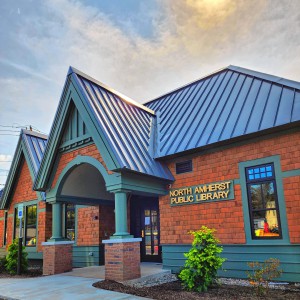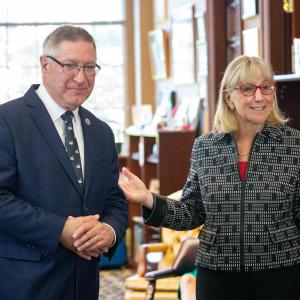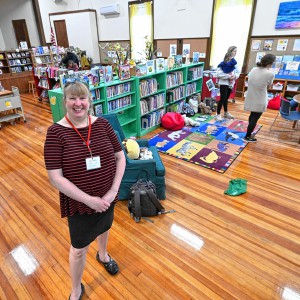Easthampton council focuses on ELL in schools as it passes city budget up 7.5%
| Published: 06-11-2023 6:00 PM |
EASTHAMPTON — The City Council approved a $52.2 million budget for next fiscal year Wednesday night, but not before council members engaged in significant discussion on the importance of maintaining specific programming in the city’s schools.
Councilors were vocal in their desire to support the schools, with several expressing concern about a proposed cut to the English Language Learners (ELL) program.
Precinct 5 Councilor Dan Rist, who serves as chairperson of the Finance Committee, noted that the council does not typically delve into the details of school programming, as it normally falls under the purview of the elected School Committee. However, he said the ELL program affects the entire community, especially BIPOC, or Black, Indigenous and people of color residents.
“Although the superintendent defended the reduction because data suggested very good results from the program, it is the opinion of the Finance Committee that a drop in the available staff could result in a less than desirable success rate,” Rist said.
Ultimately, nearly the entire fiscal 2024 budget, which is 7.5%, or $3.76 million, more than the previous fiscal year’s spending plan, passed unanimously, except for the school department. At-large Councilor Brad Riley abstained on the school department’s $18.8 million budget, which is an increase of 5.28% over last year’s budget. The new fiscal year begins on July 1.
In April, Superintendent Allison LeClair gave a presentation on the English Language Learners program, saying that she anticipated a lower participation rate because several students had tested out of the program. As such, she proposed reassigning two paraeducators to other programming, thus reducing the program to one full-time employee for 18 students in kindergarten through fourth grade, one full-time employee for 15 students in fifth through eighth grade, and one part-time employee for nine students in ninth through 12th grade.
Since then, Council President Homar Gomez and At-Large Councilor Koni Denham said they have met with teachers in the district who say that a reduction in these services would have a detrimental impact on students.
After councilors brought their concerns to the School Committee’s Finance Subcommittee, members of the school board have recognized that some adjustments may need to be made. School Committee member Marin Goldstein, who serves as a chairperson of the Finance Subcommittee, said at Wednesday’s council hearing that the committee has pledged to fund a paraeducator at the elementary level for next year as student needs “warrant a teacher and paraeducator” as they integrate their English language learning into their academic career.
Article continues after...
Yesterday's Most Read Articles
 Northampton bans auto dealerships near downtown; zone change won’t affect Volvo operation on King Street
Northampton bans auto dealerships near downtown; zone change won’t affect Volvo operation on King Street
 Proposed Hatfield pickleball/tennis building raising eyebrows
Proposed Hatfield pickleball/tennis building raising eyebrows
 South Hadley man killed in I-91 crash
South Hadley man killed in I-91 crash
 ‘Home away from home’: North Amherst Library officially dedicated, as anonymous donor of $1.7M revealed
‘Home away from home’: North Amherst Library officially dedicated, as anonymous donor of $1.7M revealed
 Police respond to alcohol-fueled incidents in Amherst
Police respond to alcohol-fueled incidents in Amherst
 Public gets a look at progress on Northampton Resilience Hub
Public gets a look at progress on Northampton Resilience Hub
Before making a recommendation regarding the middle or high school levels, the committee will hear from ELL staff in July.
Following Goldstein’s statement, Gomez, who didn’t know any English when he moved to the U.S. more than two decades ago from Puerto Rico, gave a statement of his own in Spanish.
Looking around at his colleagues and fellow city residents, he asked if they were confused at what he was saying and reiterated how difficult it must be for students in the ELL program to understand.
“ELL is really important, and the message that we have to send, not just for our community, but also for our future neighbors, is that this community is welcome. They are welcome here. And we’re going to help them succeed because we have programs that make that succeed,” Gomez said.
Denham also advocated for maintaining the program, saying that ongoing support is necessary, even if students test out of the ELL program. She said that ongoing mentorship and a “battery of resources” is important and argued that a mentality of only meeting the state’s requirements for ELL programming is a “failure.” She said that “just enough” perception becomes ingrained in students, who in turn don’t ask for help because they don’t think they have the right to ask for more.
“What we are advocating for as a City Council is to break that (generational) cycle to give those students more than what they need, and it doesn’t matter what the program says in terms of how many students that teacher is supposed to have. Create additional resources for those students to continue to work with those individuals,” she said.
Both Gomez and Denham advocated for the School Committee to come forward and ask for a supplemental appropriation for additional salary funding to ensure that ELL students remain successful.
Riley also gave an impassioned speech detailing his own struggles with language barriers growing up in the rural part of Vermont on the Canadian border, surrounded by Francophone culture. That experience, he says, was exacerbated by a physical disability that made it difficult to learn how to speak.
“I had to fight like hell, my entire life, to learn how to be in a space where I can sit at a table like this,” he said. “So where I struggle with this, is that we are now at the end of this process, and we’re basically saying that there’s a good faith effort, that we may fully find these types of programs for these students. So what kind of a message does that say to these kids that are in the schools?”
In the end, Riley said if the city was not going to provide a foundation for all Easthampton’s students that’s the same as every other student, it would not be “good enough” for him.
Another area of the budget that received much feedback was culture and recreation, which includes funding for the Easthampton Public Library and Parks and Recreation. Next year’s budget includes a 12.24% increase in spending to $720,774, with the library’s budget going up by 10%, which Rist noted was far higher than the 3% other departments received.
Rist said the library’s budget is $20,000 more than required by the state. Between that and the $500,000 supplemental appropriation from the city’s cannabis stabilization fund approved in March, he said the council hopes the library will be able to be self-sustainable.
Several residents spoke favorably about this section of the budget, including library staff members and board members.
Chuck McCullagh, an advocate for the library and the chief financial officer at The Williston Northampton School, again reiterated that the city’s funding will allow the nonprofit library to balance its budget, maintain its endowment and pursue an offer of a donated building at 52 Main St. from BankESB. Funding will also enable the nonprofit to hire a professional fundraiser, which will help keep the budget balanced.
“In my experience in working with the library, it’s been incredibly gratifying to work with the City Council and the mayor in pointing out what’s necessary to make this work but also seeing the response that’s come from this group,” he said.
McCullagh noted that the library’s plan going forward would be to use the building as a satellite facility initially and obtain loans to renovate the space to help expand services.
Overall, Rist described the financial picture of the city as being “excellent” and offered an “A-plus” rating, with most of the increases in the budget being due to salary increases and collective bargaining increases for unions.
“We are in good shape,” he said.
Emily Thurlow can be reached at ethurlow@gazettenet.com.
 State Senate budget funds free community college for all
State Senate budget funds free community college for all ‘We can just be who we are’: Thousands show support for LGBTQ community at Hampshire Pride
‘We can just be who we are’: Thousands show support for LGBTQ community at Hampshire Pride Doors open at Tilton Library’s temporary home at South Deerfield Congregational Church
Doors open at Tilton Library’s temporary home at South Deerfield Congregational Church Area property deed transfers, May 2
Area property deed transfers, May 2
